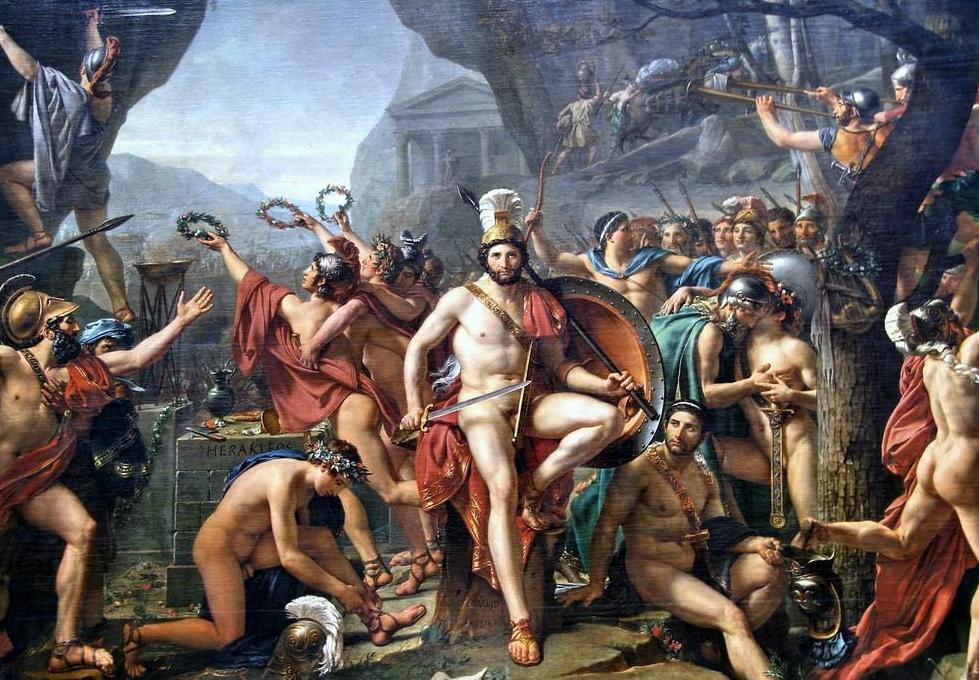
Figure 1.--The best knowm image of the Battle of Thermopylae is 'Leonidas at Thermopylae' an 1814 painting by Jacques-Louis David. David is famous for his heroic Napoleonic images. And in the history of battle painings, nothing could be more heroic than the Battle of Thermopylae. David does not give us a bloody battle scene, but s view just before the battle. Educated people at the time would have been familar with the scene David perficts. Modern viewers may be aot confused as its seems idelic rather than a prelude to one of the great battles of history. David began to work on the painting in 1798, intending it as companion piece to 'The Intervention of the Sabine Women'. This was just a Napoleon was consolidating power. He did not finish it, however, until what seemed like the end of Napoleon's storied career (1814). Leonidas was the King of Sparta, who with 300 hand-picked men held the narrow pass at Thermopylae against Xerxes' huge invading Persian army. There is bo doubt that they are Spartans as they all have scarlet capes. Leonidas and his Spartans were killed to a man, but only their heroic defence delayed the Persians and had ensured the safe withdrawl of the Greek fleet. David packed a great deal into his canvas. The sentinel trumpeters at the upper right sound the call to arms. In response, two soldiers rush to grab their weapons whuch are hanging from the branches of an oak tree. A Greek temple sits in the bavkground haze. There was not such temple at Thermopylae, this surely much represent the very essence of the Greece that they are defending. Leonidas himself sits on a rock facing out toward the Persians--and the viewer. He has no illusions about what is about to happen. Given the size of the Persian Army, the battle can hve only one conclusion. He is thinking about the fate of himsel and his men. At his right, sitting down is is Agis, his brother-in-law. He is second in command. To emphasize their patriotism and determinitation, David introduces an oath. In back of Leonidas three youthful soldiers raise wreaths above altars dedicated to Hercules and Aphrodite. Leonidas is flanked by two boys, hardly old enouth to fight. one is tieing his sandal, preparing for battle. The other kisses his aged father. Leonidas tried to send the two boys to the rear with the excuse of carrying a message. Both have refused to leave their comrads. The message is presumably the scroll that can be seen at Leonidas' feet, reading in Greek, 'Leonidas, son of Anaxandrides, King to the Gerousia (Spartan Council of Elders). Greetings.' Now with the sacrifices made, notice the sacrfice smoke rising at the left, Leonidas and his men brace for the Persian onslaught, prepared to die for the glory of Sparta. In the background you can just make out the baggage train departing with the possessions that the Leonidas nd his men will no longer need. And at the left, a Spartan climbs the rock facr to to inscribe a message as to what is about to occur. |

